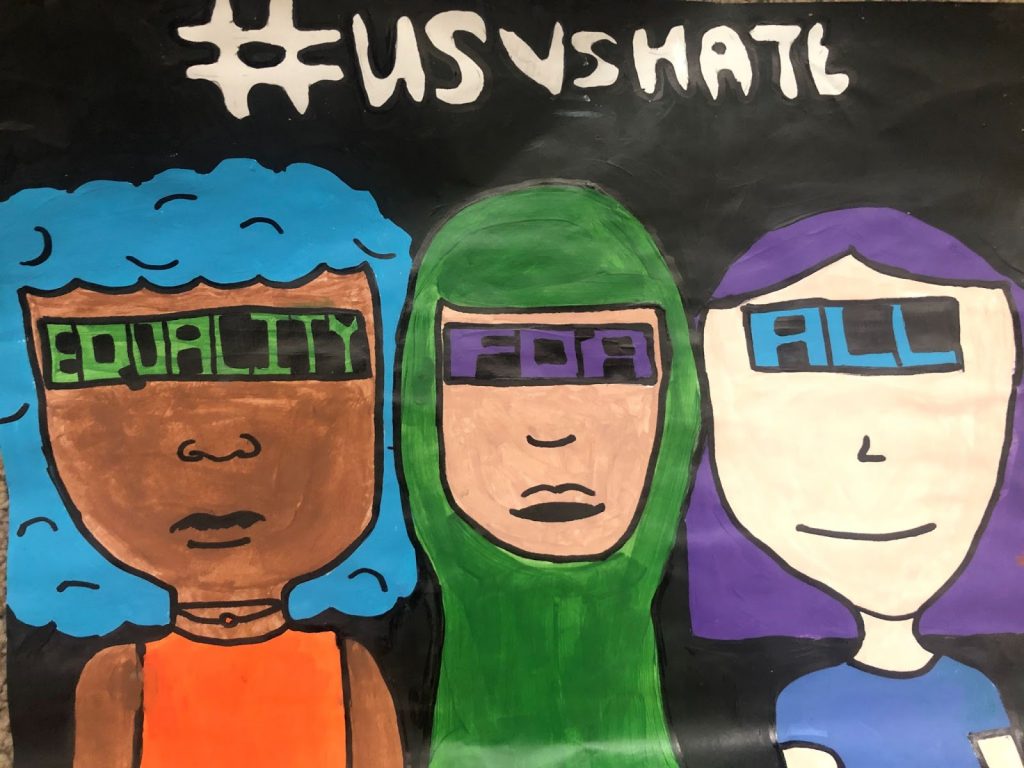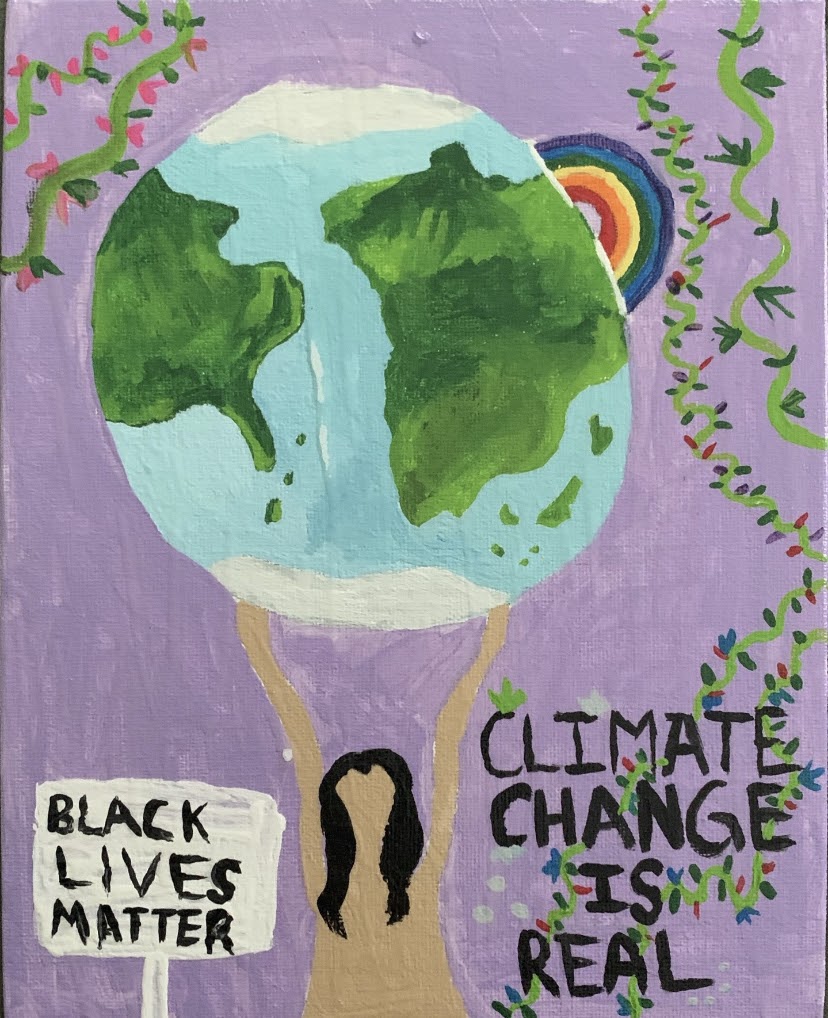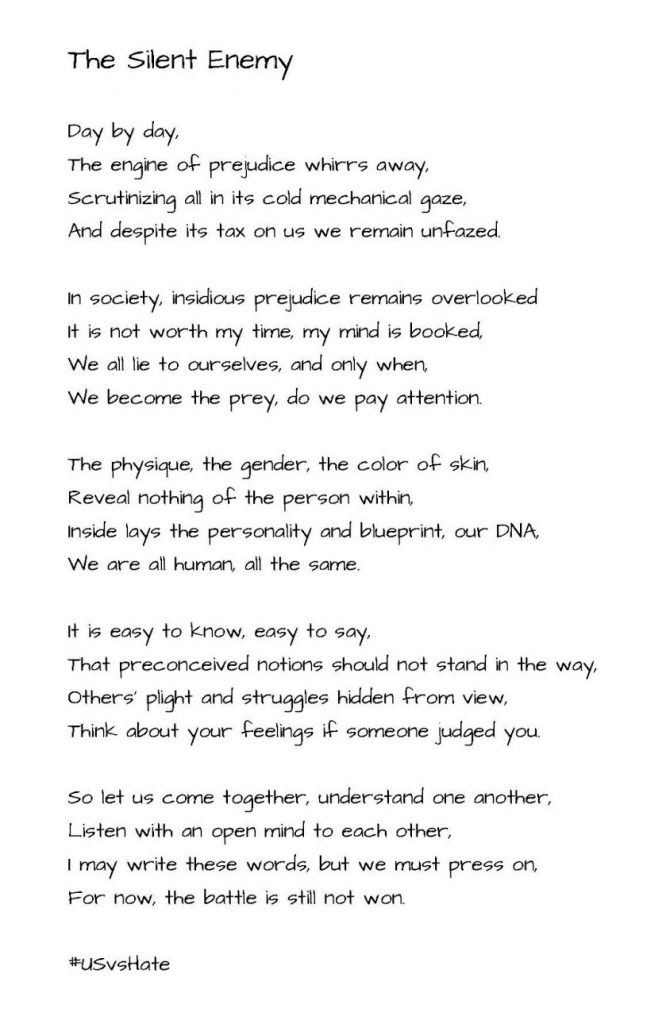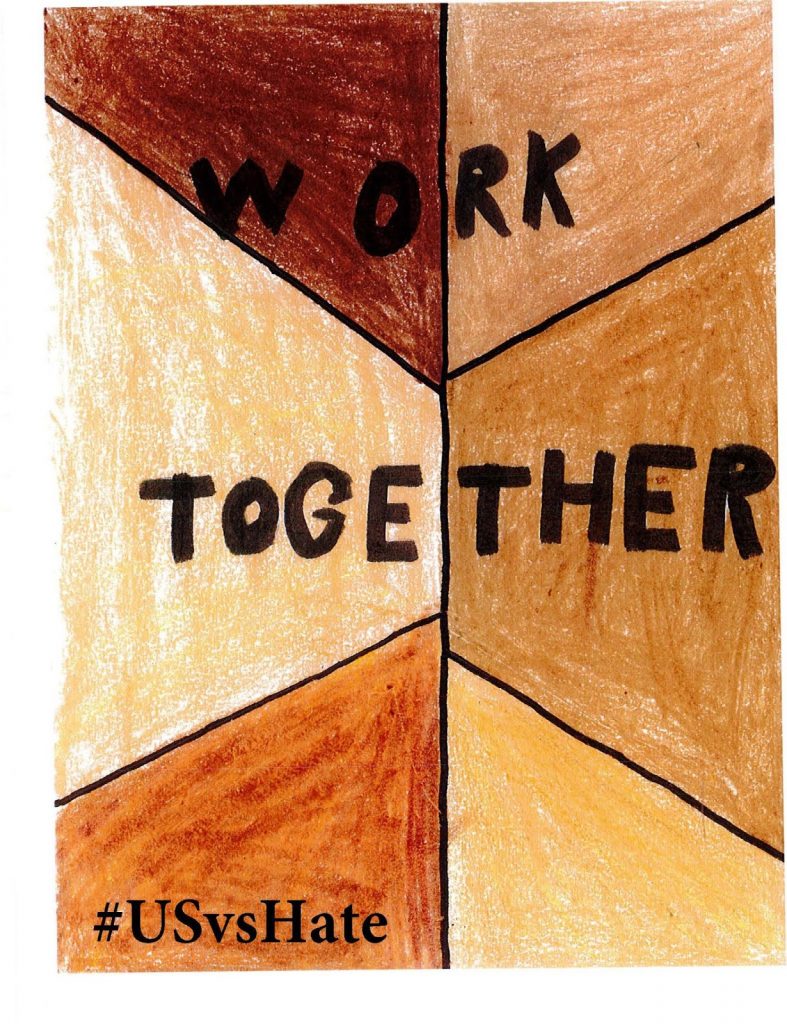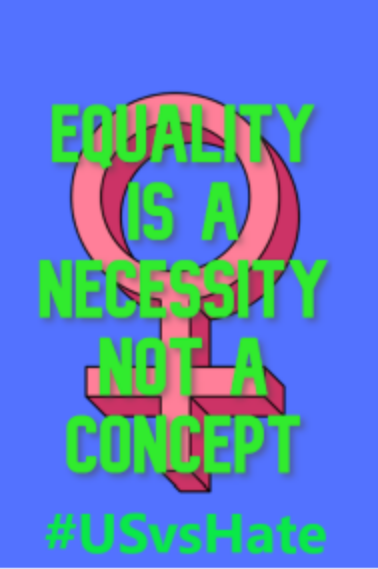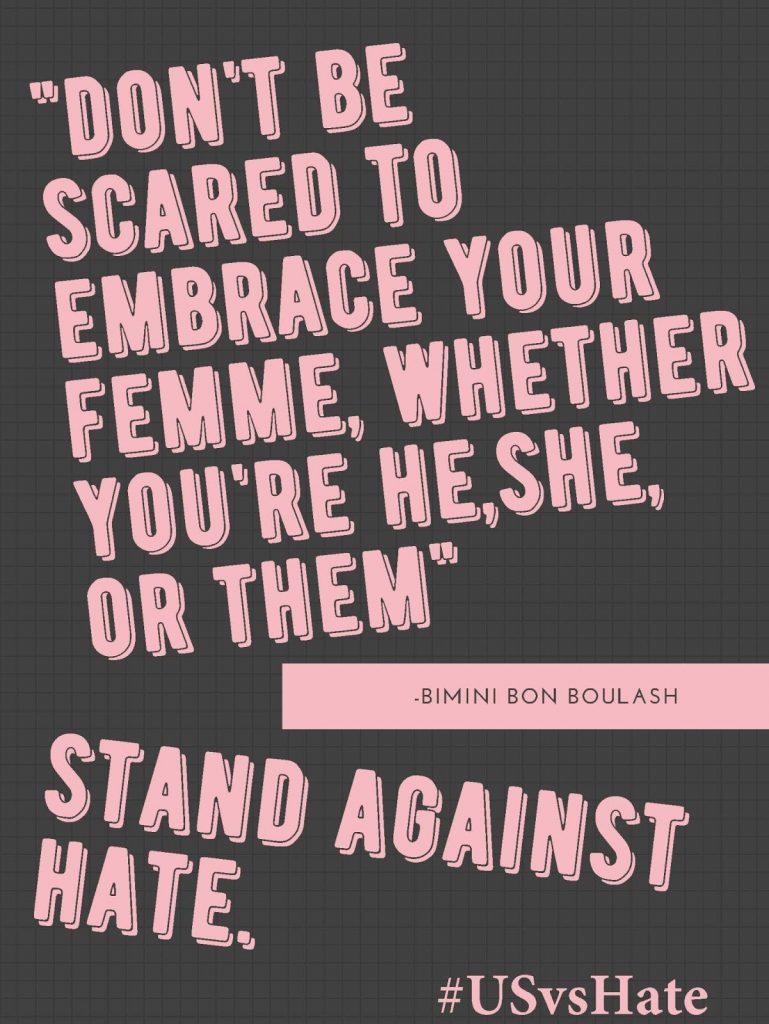Amehja, Grade 11, Pennsylvania
Amehja explains, “When I wrote this poem, I was dealing with a feeling of powerlessness to help my community. Being a Philadelphia native and person of color, I have seen and experienced personally how devastating police brutality and gun violence can be. In fact, friends of my family members have been killed as a result of gun violence in my city. Seeing their pain, I wanted to help them. I wanted to change things. But I didn’t feel like I had the power or resources. So I used one of the most valuable resources I had: I wrote a poem. In turn, I was empowered by my own words, and hoped to empower others by bringing awareness to issues that affect so many communities as a means to ultimately cultivate a kinder world.”
Sonia, Grade 11, Ohio
Sonia explains, “I grew up in a multi-ethnic household: Russian and Indian. I never thought of myself as “different” until high school when I started to notice that I was not “white enough” for some groups nor was I “brown enough” for others. Then I learned that there was a difference in the shades of brown as well as religious hatred within my Indian community. Some Hindus looked down on Muslims, while both groups are looked down upon by some white Christians. I wrote “Once They Were” to expose the ridiculousness of the situation.”
View the short story here.
Izzy, Grade 8, California
Izzy explains, “The simple yet impactful message equality for all can be interpreted in many different ways. We can hear the message and just think of having a general respect for everybody, no matter your beliefs, skin color, or where you come from. It’s important to know that despite our differences we can still respect everyone, even if we might not all get along. We can also see this message by understanding the first word, equality. I have seen around on social media that some people think the BLM movement is to put Black lives on a pedestal; however, this isn’t true. The BLM movement is for equality, for all to be equal and have a general respect for each other so we can live in a world of peace together.”
Amreen, Grade 11, Maryland
Student creator, Amreen, shares, “I drew based on how I felt at that time. I had the urge to show the life I want to live.”
Sabrina, Grade 11
Sabrina’s teacher, Lara, shares: “The goal of my sociology class this semester has been to continue to support and inspire these students, arming them with a framework for understanding their ever-changing world.”
Luke, Grade 11, California
Student creator, Luke, shares, “My intention was to express how people should stop judging one another. Sometimes we need to acknowledge that our instinct is not always based on reality but on subconscious systemic prejudice.”
Anonymous, Grade 5, California
The student creator shared with us the inspiration behind their message: “My art shows that even if you are a different race and have a different skin color, that you should still show equality and work together.” Their teacher, Trish, further explained: “My goal for myself as a teacher this year is to bring in more texts, songs, and videos by and about Blacks, Indigenous, and People of Color (BIPOC). I find that poetry is a genre that can sometimes make what is a difficult topic more accessible. I showed a TedTalk of Clint Smith’s spoken poetry, “The Danger of Silence” to the class. We analyzed his work and discussed his message. We discussed ways that students have already used their voices to stand up for others. Many have participated in political rallies and protests. Some have taken on the role of environmental activists and have participated in local “beach clean-ups”. We read an article about Christian Cooper, the bird watcher in Central Park who experienced racial profiling by a white dog walker, and the graphic novel written about him. We read the graphic novel and watched video of the woman who was walking her dog. Our classroom discussions focused on racism, stereotypes, and equity. I had a set of stickers from a previous US vs. Hate contest with images created by students. Without telling students where the stickers came from and who designed them, I engaged the class in a discussion asking questions like “What do you notice?” “What do you think are the messages that the artists were trying to express?” We then connected the fact that art can be used as a method of using your voice to stand up for others and to stand against hate. The stickers were art as well as the graphic novel. Students were asked to make a visual representation about how they can stand up for others.
Grace, Grade 8, Connecticut
Grace explains, “I’d dealt with facing stereotypes with misogynistic undertones outside and inside of school from many people I knew. I decided to create the poster focusing on women’s rights and equality as I was most passionate about that cause at that time. I’d said, “Equality is a Necessity Not a Concept” in the context of equal rights, but also equal treatment. The male gaze was something I’d become accustomed to and wanted to combat it.”
Sergio, UC San Diego – Education Sciences, San Diego, CA
Sergio explains, “I wanted to focus on this idea that love comes from within and being able to embrace what we love about ourselves helps us come together as one and fight for those who need it most.”

